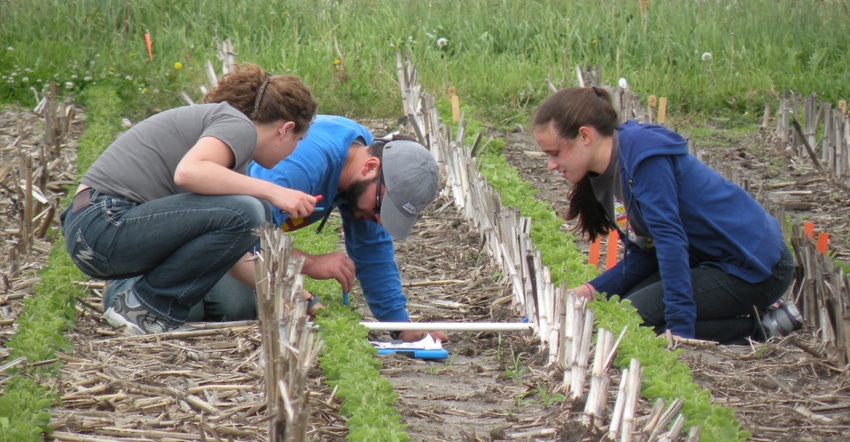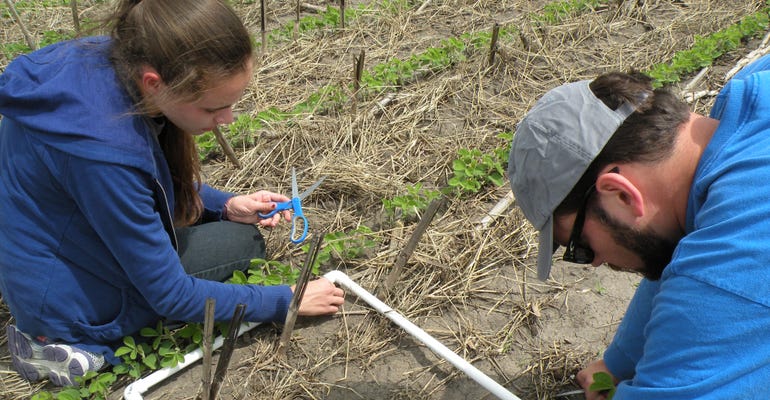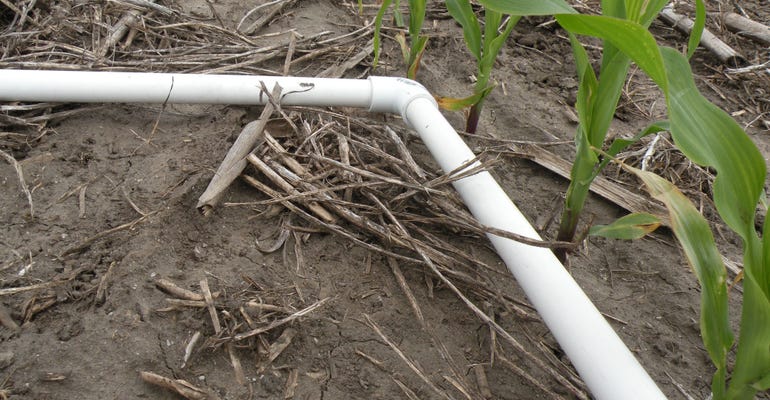May 23, 2019

By Ann Staudt
It’s generally accepted that worms are good for the soil. When a farmer walks through a crop field or a homeowner turns over a spade full of soil in the garden, the sight of a glistening and wriggling worm gives them an indication the soil is healthy and fertile.
Over the years, scientists have found correlations between the presence of earthworms and healthy and productive soil. The harbinger of healthy soil in this case is the common nightcrawler (Lumbricus terrestris), a native of Europe that immigrated to North America along with its human counterparts and has found a happy home here.
Nightcrawlers are slow to migrate, so not having them in a field is not necessarily a sign of poor soil health. It just means they haven’t inhabited a particular field — yet. Often, they are found close to homesteads where the planting of flowers and ornamentals initially introduced them to the local ecosystem. And migrating on the order of tens of feet per year, it may take a long time to expand their territory.
Earthworms sign of healthy soil
These slow-moving creatures do provide major benefits where they reside. Burrowing as deep as 5 or 6 feet down in the soil profile, their burrows help with water infiltration, can slow water runoff and provide natural aeration that loosens the soil.
Worms also feed on decomposing plant material, hastening the return of nutrients to the soil. In processing (digesting) the organic matter, worms kick-start the activity of the soil microbiota, with billions of tiny soil microbes cycling and releasing nutrients in plant-consumable forms. The deep tunnels also provide ideal channels for plant root growth.

FREE HELP
FREE HELP: Worms feed on crop residue, dead roots, leaves, grasses, manure and soil, leaving behind castings that are a valuable type of fertilizer. It’s like getting free help on the farm.

FREE HELP
Atop its burrow, the worm deposits a mound of clumpy material consisting of processed soil and organic matter, plant material, and excrement. These distinctive mounds are called middens, or casts, and they make it easy to find active nightcrawler burrows.
Finding middens in a field is much easier than spotting the worms, which are averse to light and physical disturbances such as vibration. The presence of middens is a positive indicator, and surveying the quantity and distribution of middens is one way to informally assess soil quality in a field.
Surveying worm populations
Formally assessing soil health in farm fields — particularly measuring changes in organic matter — is a labor-intensive scientific endeavor that entails taking multiple soil samples for analysis: sometimes hundreds of samples per acre. However, the presence of worms in a field and the density of their population are early biological indicators that provide a snapshot of the relative health of a field under different management practices, such as fields with and without cover crops.
So, how does one go about surveying worm populations in a field? It’s not as icky or difficult as you may think. Water Rocks! and Iowa Learning Farms have created easy guides for conducting worm surveys and extending the data to estimate populations across an acreage. Midden counts are best done early in the growing season and within a few days after a rain.

COVER CROPS
PVC FRAME: Constructing a PVC frame is the first step to calculating how many earthworms are in an acre.

COVER CROPS
The worm survey steps:
1. Build frame. Prepare a lightweight frame measuring 19.2 by 30 inches, using a three-quarter-inch PVC pipe. The dimensions of the frame are based on typical 30-inch row spacing.
2. Position frame. Place the PVC frame between crop rows, avoiding inter-rows with obvious wheel tracks. The area should include the new plants of one row and reach to the base of the plants in the next row.
3. Reduce residue. Use scissors to carefully cut back all plant residue to 1 to 2 inches to view the soil surface.
4. Search for middens. Within the frame, look for middens — mounds of soil, plant residue or excrement. Count the total number of middens in the frame. Repeat the count at least four times in the designated row. The more, the better to build statistical confidence.
5. Do the math. An acre equals 43,560 square feet, which divided by 4 square feet per frame, equals 10,890 frames per acre. With this information, extrapolate the number of earthworm middens per acre: average quantity middens per frame × 10,890 = total middens per acre.
To find easy step-by-step instructions for conducting your own worm counts, WaterRocks offers a pocket guide.
Staudt is Water Rocks director and manager and content specialist for Iowa Learning Farms.
Source: Iowa Learning Farms, which is responsible for the information provided and is wholly owned by the source. Informa Business Media and its subsidiaries aren’t responsible for any of the content contained in this information asset.
You May Also Like




